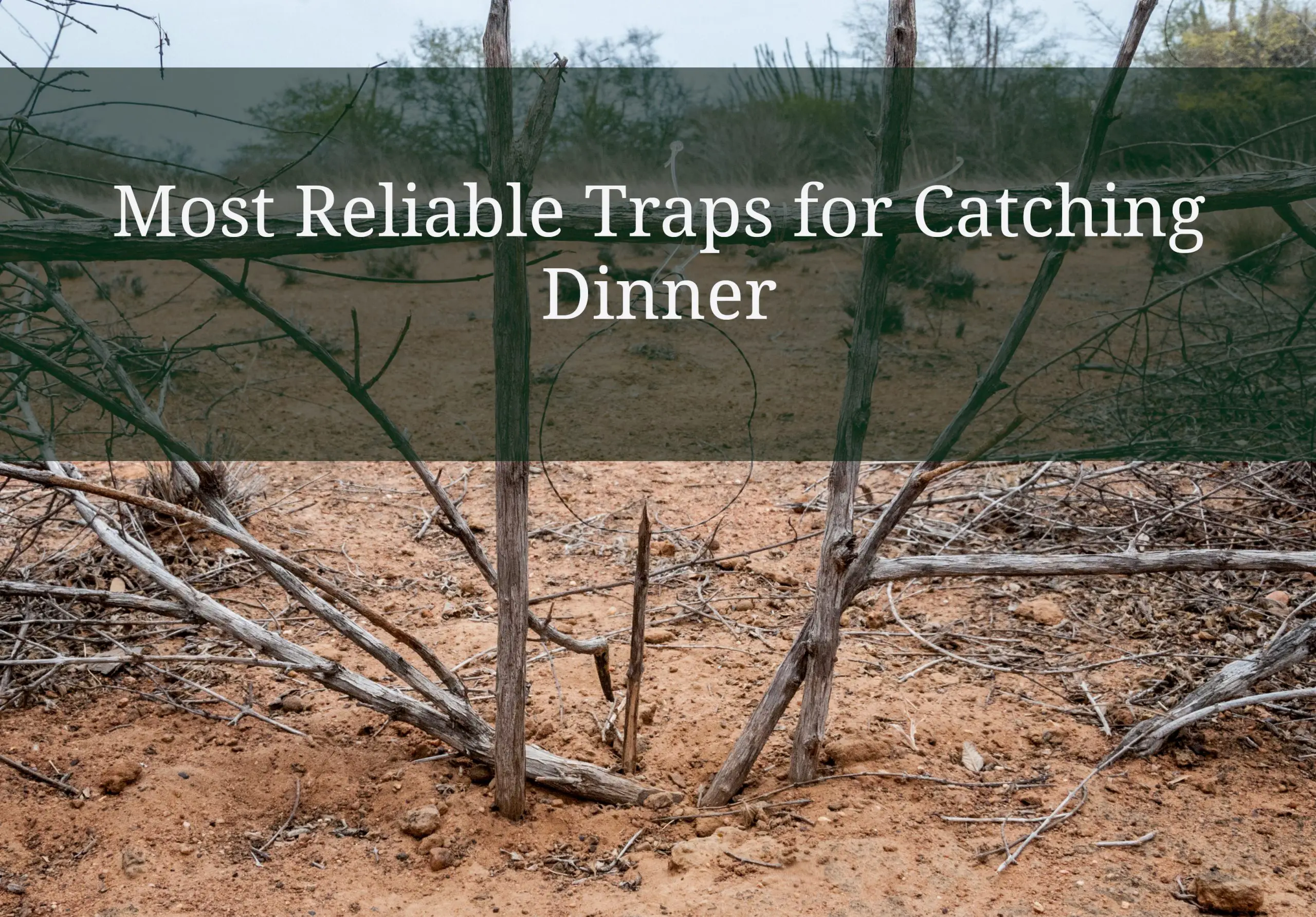
The first snare I set for a rabbit didn’t catch anything. I was about 10 and had rigged a slip knot with some bailing twine and set it on a game trail. I didn’t know if rabbits used the game trail, but it seemed like a good spot to my 10 year old brain. It didn’t even get touched. This could have been from the human smell that I spread around it, or any other number of things. I don’t remember all the details, but I remember being disappointed at coming back an hour later and not finding a rabbit. I know, I was clueless.
Snares
I’ve learned a lot since then. I’ve also improved my equipment. I now have a good set of snares, like the ones pictured below. These work for either rabbits, coyotes, foxes, or things in that size range. Unlike leg traps, snares usually kill the creature trapped. If you needed to provide dinner for your family solely based on traps, snares would be a good way to go. Also, if my life or food source depended on it, I would be all about quantity and quality. A snare would do the job. It’d be my first choice.

Steven Rinella in his book Meat Eater: Adventures from the Life of an American Hunter even mentions his time using snares. In the state he was in, Snares weren’t legal. They were, however, effective. Even if you live in a state where these aren’t legal, if society has broken down and its the end of the world, these laws likely won’t mean much. They give you a good chance of feeding your families.
Deadfall
Deadfalls are also a great option. These are more designed for small game or rodents, I would say up to a rabbit, but it really depends on the size of stone that will fall on the creature. These are fairly simple to make yourself, but it really helps to have one good set to use as a guide first. I first copied a set my brother made, as he is way more into trapping than I am (he even started TrapHuntFishOutdoors.com, so he’s pretty hard core).
The trappers bible is a great book that helped my brother get started, and helped him make his first deadfall. The book contains a variety of other options of traps you can make or use to catch a wide variety of animals, in a wide variety of ways. It’s got great pictures and how to descriptions. It’s a must have for any prepper to have on the shelf.

Conibear
Conibear traps are another option, though these are mostly used for fur trapping. Many people eat beaver meat, and reports are that its fairly similar to pot roast if you don’t get any castor in it. Muskrats, another popular target for these traps, don’t sound particularly appetizing, but if you’re hungry, who knows?
Crawfish Trap
These traps can be used for crayfish (also called crawfish and crawdads). When I use it, I take fish guts or other meat scraps and throw them in. I’ve also used a jar of cat food and had good luck with that. You just put the bait in, then throw it in the water. For crayfish, I find its best to be in water no deeper than 10 ft. They can also come right into shore, so use some trial and error.

These are super easy to use, and out of all the traps, I’ve caught the most amount of critters I’ve eaten with one of these. I’ve used them in the west coast, west, and mid-west, and they work great everywhere. Apart from Crayfish, these could also be used to catch fish or other water creatures, such as shrimp, minnows, or other fish.

A product that is relatively inexpensive that is helping 3rd world countries get clean water. In an apocalyptic world, everywhere would be a 3rd world country, so I take note…. READ MORE
Keep Learning
Prepping is an ongoing venture. Because of this, we recommend that you subscribe to our bimonthly newsletter to keep prepping, emergency preparedness, and self reliance on your mind. We promise, we’re not spammy, which is why we only email you twice per month. We hope you think about being prepared more than twice per month, but our newsletter is a valuable resource to help you learn new things, and just to keep prepping on your mind. Right now you can also sign up for free. You can also follow our Facebook Page for regular articles and resources.
As an Amazon Associate I earn from qualifying purchases. I get commissions for purchases made through links in this post.


1 thought on “Most Reliable Traps for Catching Dinner”
Comments are closed.